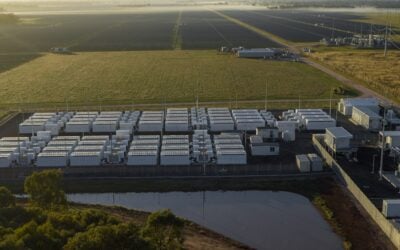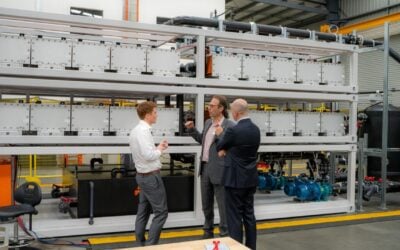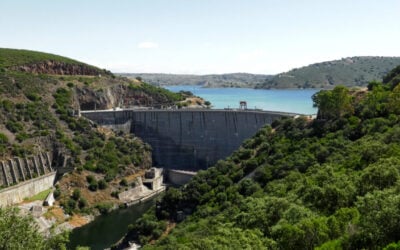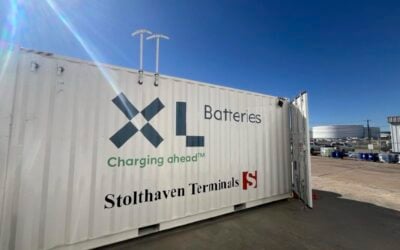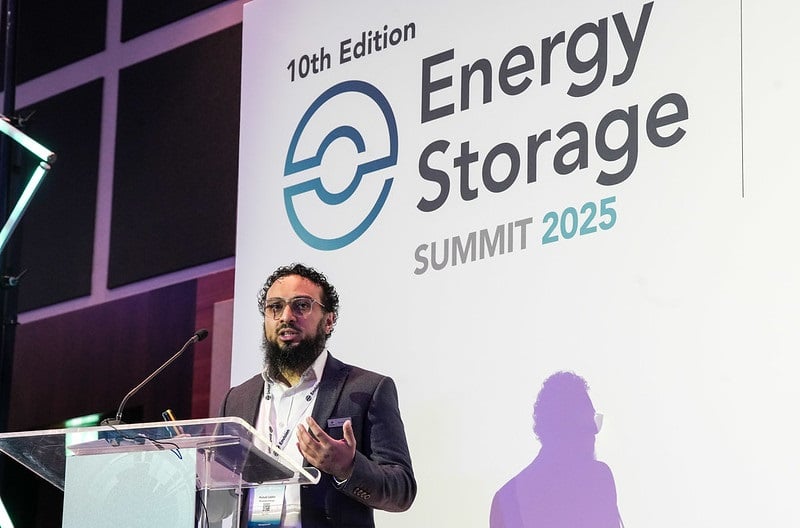
Envision Energy is preparing to reveal lithium-ion (Li-ion) battery energy storage system (BESS) technology for long-duration applications.
Speaking with ESN Premium in an interview, Envision Energy chief engineer Kotub Uddin said he could not reveal exact details ahead of launch, which is expected later this year.
Enjoy 12 months of exclusive analysis
- Regular insight and analysis of the industry’s biggest developments
- In-depth interviews with the industry’s leading figures
- Annual digital subscription to the PV Tech Power journal
- Discounts on Solar Media’s portfolio of events, in-person and virtual
Or continue reading this article for free
However, Uddin did offer some insights into how the Chinese renewable energy, storage and software technology provider has developed solutions that he believes will be competitive against pumped hydro energy storage (PHES) for applications requiring up to 10-hour discharge at full-rated power.
“We’re going to launch [these products] in the next five to six months, where cell density is improved, but also beyond that, we’re also looking at innovation in integration,” Uddin said.
Looking at the other components that occupy a containerised BESS enclosure, Envision has optimised through finding more suitable components or improving on existing parts to be more efficient and reduce footprint, among other advances.
“We start to look at the integration problem and see how we can solve that. How we can become more energy dense. Not just by increasing our cells’ energy density but also optimising how we use space in the battery enclosure.”
Uddin noted that so far, those improvements refer to the DC side of the system, but the same principles were also applied to the AC side too. He claimed that the combination of these solutions has enabled Envision to reduce the footprint of a project by as much as 40%.
“That’s a huge saving on land use and on balance of plant (BOP) work. In the end, the cumulative impact of this is going to be a reduction in the price of a project. We’re looking at technologies now that are going to improve the efficiency and compactness of the power conversion system (PCS), and that will increase our round-trip efficiency (RTE) by 1%.”
Uddin says Envision is also “improving, or fine-tuning,” its prelithiated cells to enable higher energy throughput, which in turn enables more energy trading.
The 315Ah cells in Envision’s commercially available BESS solutions are already offered with prelithiated and non-prelithiated variations. Prelithiation offers much more “aggressive degradation profiles, to the extent that for a long-duration 8-hour solution, for example, it will have three years of no degradation,” Uddin says.
Global need for long-duration energy storage
The chief engineer, together with Envision Energy system modelling engineer Sam Secher, recently wrote a Guest Blog for this site in February on long-duration lithium.
They argued that while lithium-ion BESS is generally being deployed globally to meet requirements for up to and including 4-hour duration, it could also be competitive at 6-hour to 10-hour durations.
Quoting research commissioned by global trade association LDES Council, which has modelled a need for 8TW of long-duration storage by 2040, the authors note that only around 120GW of LDES has been deployed to date, with another 120GW planned for deployment by 2035.
This shortfall exists because although technologies such as pumped hydro and newer technologies like vanadium redox flow batteries (VRFB) can provide storage duration in the 6-hour to 24-hour range. However, electricity market design and regulations do not favour these capabilities, hence the proliferation of Li-ion BESS of up to and including 4-hour duration.
As noted by Uddin and Secher in their blog, this is starting to change. Solicitations for 8-hour LDES projects have already been held in California and Australia. In India, centralised procurement via Firm Dispatchable Renewable Energy (FDRE) tenders makes it necessary for bidders to plan projects that can provide dispatchable renewable capacity over many hours, including evening and morning peaks.
New initiatives, such as a government-backed cap and floor revenue underwriting scheme in the UK and Italian grid operator Terna’s forthcoming MACSE capacity auctions, are designed explicitly to meet LDES requirements.
Room for more than lithium
While lithium-ion will play a vital role in meeting that need for multiple terawatts, Uddin says in our interview that there will be room for other technologies too.
“There is space in that 8TW for multiple technologies. I don’t think it’s going to be one technology that dominates—there will be some technologies that do much better than others,” Uddin says.
The Envision chief engineer thinks lithium-ion will be “very attractive” for applications even requiring more than 12-hour duration, but there is space for other technologies, if they can achieve competitive cost curves.
Pushing LDES forward to mass deployment will require collaboration between three parties: governments, grid operators and investors, Uddin says.
“Is it going to be government money pushing this, or will it be private investment? If you think it’s private investment, a lot of it is going to go back to how attractive this is as a business proposition, and there, costs start to come into play.”
Technology moves fast and a lot can change. Uddin says that three years ago, as lithium battery costs suddenly reversed their trajectory of rapid declines during the pandemic, many people were convinced that sodium-ion would be the answer.
“Sodium-ion has just fallen out of favour, because lithium iron phosphate (LFP) batteries have become so much cheaper, and the lifetimes are becoming more aggressive. Today we’re at 12,000, we’re going to try to push towards 15,000 cycles in a battery’s lifetime.
“When LFP prices are down and the technology’s RTE is going up, degradation profiles are improving and lifetime is getting longer, these other technologies start to struggle. This will be similar, I suppose, to how more emerging technologies adapt. I do think there is a space for them, but how much of the market they can support is a question.”
Lithium also has a big advantage in market maturity and how bankable it has become for grid-connected energy storage projects.
“From an investment point of view, technology maturity is a huge thing because if your technology is not mature, you’re a higher risk. Higher risk means your interest rates are higher; it means your project financing is poor.”
Research from BloombergNEF (BNEF) published last year came to the conclusion that while non-lithium LDES technologies are becoming more cost-competitive, many will struggle to match lithium-ion’s cost reduction potential.
In its first-ever survey of long-duration energy storage costs, published in May, BNEF found that some thermal and compressed-air storage technologies are actually cheaper on a Capex basis than an equivalent 4-hour duration Li-ion BESS. Flow batteries, which BNEF assessed as the main electrochemical energy storage technology compared to lithium, came in at US$444/kWh fully installed cost in 2023, versus US$304/kWh for a lithium-ion system’s Capex requirement.

